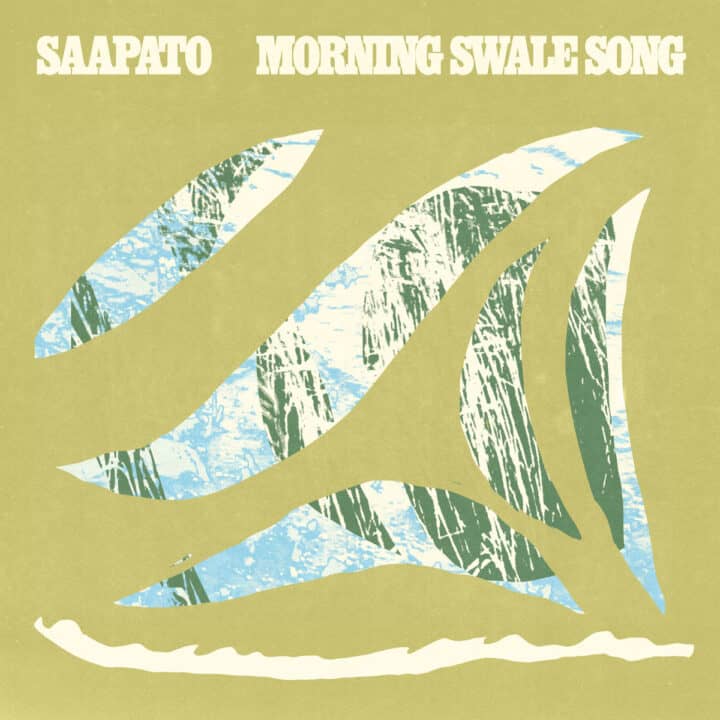There is a certain kind of music that doesn’t so much begin as it emerges, softly, reverently, like light through fog or the first breath after waking. Released March 27th, 2024, Morning Swale Song by Saapato, the ambient project of multi-instrumentalist Brendan Principato, opens with exactly that kind of intimate presence. The song doesn’t rush or announce itself; instead, it unfurls with a hush that feels spiritual in nature. A gentle drone hums in the backdrop, and before long, your ears are greeted by a fragile interplay of ambient textures that feel drawn directly from the breath of the landscape. Recorded during Principato’s National Park Service residency on Fire Island, this song is more than music, it is a living document, an environmental portrait of a coastal morning rising from dew, grass, and tide. From the moment it begins, Morning Swale Song pulls you inward, into a stillness that demands not just hearing, but listening.
The instrumentation is deliberately sparse, but within that sparseness lies an emotional richness that is deeply affecting. Synth pads stretch and contract like the distant swell of ocean waves, while shimmering guitar tones flicker in and out like sun rays weaving through tall reeds. These aren’t melodies that cling to form, they hover, dissolve, and reappear, as if part of the wind. What makes the musicality of this piece so compelling is how it mirrors the ecosystem it draws from: each sonic element behaves like a natural phenomenon, free-flowing, layered, and transient. Every new layer arrives subtly and leaves just as gently, allowing the listener to experience time the way nature does, not in seconds and minutes, but in cycles, textures, and sensations. The result is a composition that is both calming and dynamic, meditative yet emotionally alive.
There are no traditional vocals in Morning Swale Song, yet the piece doesn’t feel lacking in voice. Instead, the song finds its language in the coalescence of nature’s timbres and human instrumentation, a chorus of insect chirps, rustling leaves, wind creaking through wood, and the soft, melancholic sighs of synths and strings. These organic field recordings, gathered in the swale behind Fire Island’s dune at around 8 a.m., are not simply ambient filler, they are the heart of the arrangement. When combined with warm electronic tones and gentle guitar motifs, they give the illusion that the Earth itself is whispering. There’s an emotional vulnerability here, a sense of humility before nature that permeates every note. The absence of lyrics opens a space where the listener can project their own emotions, grief, wonder, nostalgia, into the soundscape, making each listen uniquely personal and intimately resonant.
What makes the song particularly arresting is its ability to make you feel present. There is something so grounding about the way the music is constructed. You’re not imagining a place, you are in it. The world around you slows, and everything that once felt loud, both outside and inside, begins to quiet. The air feels cooler, the space around you softer. Personally, I found myself transported to a memory I didn’t even know I had: standing barefoot on wet morning grass, eyes closed, with nothing but the wind and my breath to keep me company. That kind of emotional evocation is rare. The track’s combination of restraint and richness allows it to create a safe sonic space, one that feels as healing as it is haunting. It doesn’t impose itself on you, it simply opens a door and waits for you to walk in.
Technically, the production is exquisite. Every layer feels carefully positioned, each sound breathing in its own frequency without crowding another. The stereo field is wide, immersive, and detailed, allowing you to hear not just the music, but the space within the music. You notice how the reverb folds around the insect calls, how the gentle whoosh of air passes like a ghost through the synth beds, how the faint crunch of shoreline gravel adds texture beneath it all. There’s a tactile intimacy in how the elements are mixed, like the sound was meant to be touched, not just heard. It is clear that a meticulous level of care went into not only composing, but also capturing and presenting this sonic environment. It reminds me of why sound design in ambient music is not just an aesthetic decision, it is an emotional and philosophical one.
As the song slowly evolves, its transitions are not abrupt but seamless, like waves overlapping or wind shifting direction. There is no climax, no dramatic ascent or explosive release. Instead, the power of Morning Swale Song lies in its devotion to constancy, in its commitment to the subtle emotional shifts that come from deep listening. Around the mid-point, a faint melodic swell tugs at your chest, hinting at something unspoken, a yearning, perhaps, or a quiet farewell. But it never lingers too long. The song lets go of its own moments the same way nature does, without regret, moving forward with grace. By the end, you don’t feel like something has ended, but rather that you’ve been changed by something soft and sacred, like a memory you never want to disturb.
In its totality, Morning Swale Song achieves what few ambient compositions do: it captures the spirituality of space, the emotional intelligence of silence, and the ecological poetry of sound. It doesn’t try to impress or overwhelm; instead, it invites the listener into a deeper awareness of the world’s textures and rhythms, and perhaps, a deeper awareness of themselves. It is a rare gem of sonic craftsmanship, an ambient tone poem that feels more like a lived experience than a musical performance. For those willing to give themselves over to its quiet current, it offers not just beauty, but peace, and in these times, that may be the most profound gift a song can give.
Connect with Saapato below.



